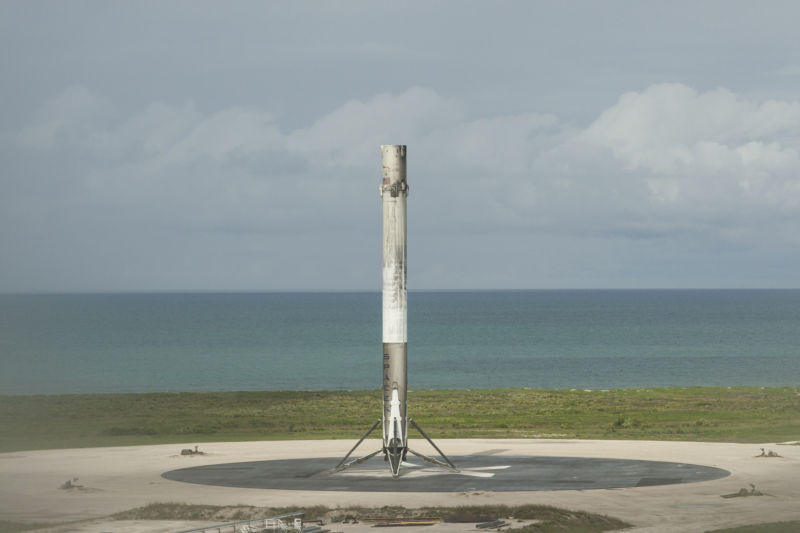
During the last decade, NASA has invested billions of dollars into programs with private companies to carry cargo and, eventually, astronauts to the International Space Station. These commercial services were powered by new kinds of contracts for the agency, because they offered a "fixed price" for services and required companies to put in their own funding to develop new spacecraft and rockets.
But the space agency has established a Maginot line of sorts around the planet when it comes to deep space exploration. For example, less than a year ago, NASA's then-administrator, Charles Bolden, said he's "not a big fan" of commercial companies building large, heavy lift rockets that will enable private companies to venture beyond low-Earth orbit. For Bolden, the lines were clear: we'll support you near Earth, but leave deep space to the professionals. "We believe our responsibility to the nation is to take care of things that normal people cannot do, or don’t want to do, like large launch vehicles," Bolden said of NASA.
Nevertheless, SpaceX, Blue Origin, and other companies have pressed forward with their plans to develop large rockets capable of deep space exploration. And they're making progress. SpaceX's Falcon Heavy booster, which has 90 percent of the lift capability to low Earth orbit as the initial version of NASA's Space Launch System, is likely to fly in 2017—up to two years before NASA's own big rocket.
Call for deep space
On Thursday during a hearing before the US Senate's Subcommittee on Space, Science, and Competitiveness, SpaceX formally called upon the US government to support public-private partnerships in deep space. Tim Hughes, SpaceX's senior vice president for global business and government affairs, testified. "The principles applied in past programs for low Earth orbit capability can and should be applied to deep space exploration," Hughes said. He referred to NASA's Commercial Orbital Transportation Services, or COTS program.
NASA, Hughes said, should now consider funding a COTS-like program to run "in parallel" to NASA's Space Launch System and Orion spacecraft for deep space exploration. "There's a program of record right now that is NASA's central focus for deep space exploration," Hughes said in response to a Senator's question. "But I think it can be readily supplemented with public-private partnerships to allow us to sustain a permanent presence in space."
As examples, Hughes said NASA could set "high level requirements" for companies, such as demonstrating the vertical takeoff and landing of rockets from the lunar surface, delivering large amounts of cargo to the surface of Mars, or building a more reliable communications network between Earth and Mars. All of these projects, he said, would enable the United States to establish a permanent presence in space, rather than fly one-off missions.
COTS works?
Hughes also offered evidence that the COTS program has benefited both NASA and SpaceX to a large degree. For example, in 2011, NASA estimated that it would have cost the agency about $4 billion to develop a rocket like the Falcon 9 booster based upon NASA's traditional contracting processes. A more "commercial development" approach might have allowed the agency to pay only $1.7 billion.
However, by setting a high-level requirement for cargo transport to the space station—and leaving the details to industry—SpaceX was allowed to design and develop the Falcon 9 rocket on its own, Hughes said. The cost? According to NASA's own independently verified numbers, SpaceX’s development costs of both the Falcon 1 and Falcon 9 rockets were estimated at approximately $390 million in total. NASA got a better deal, and SpaceX got a rocket it could use to fly commercial payloads as well as NASA ones.
It is not clear how warm the senators were to SpaceX's plan, which shares support in the commercial space community from others interested in deep space activities (such as Blue Origin, with its Blue Moon concept). "I think the COTS program has been a great success story for NASA and the commercial marketplace, and believe that the government should look at all options for public private partnership in advancing our nation's exploration goals," said Eric Stallmer, president of the Commercial Spaceflight Federation.
However, some at NASA will likely resist the notion, as it would mean relinquishing some of the control they have over design and development of rockets and spacecraft under the agency's traditional, cost-plus contracting methods. The beneficiaries of those contracts—including Lockheed Martin, Boeing, Aerojet Rocketydyne, and other established aerospace companies—are also likely to be less than welcoming toward NASA opening the door to competition in deep space exploration to new space firms.
reader comments
128